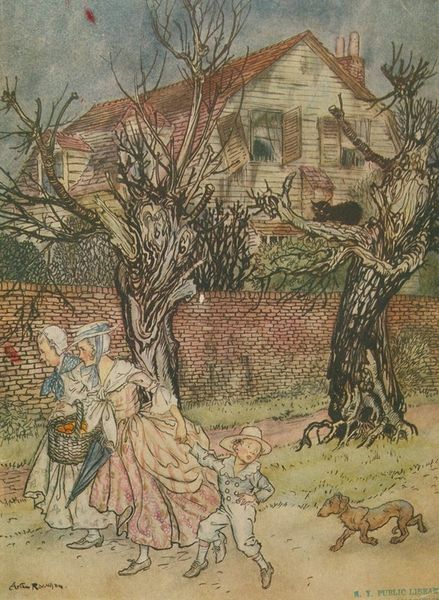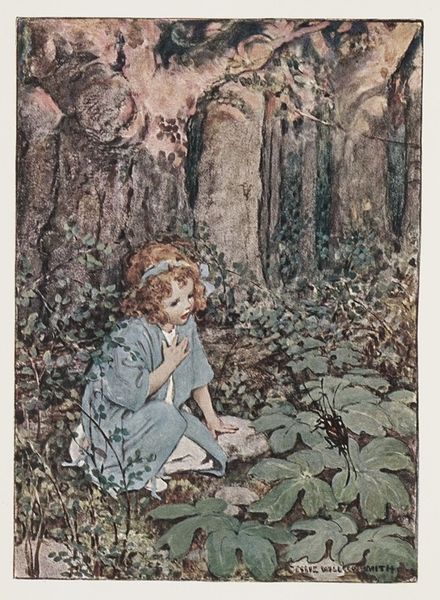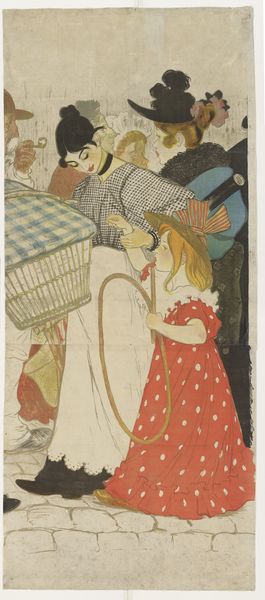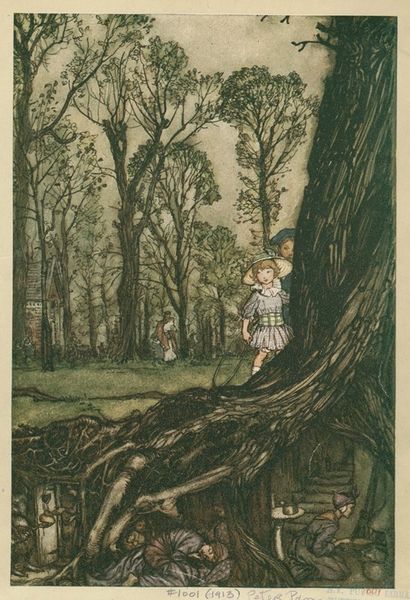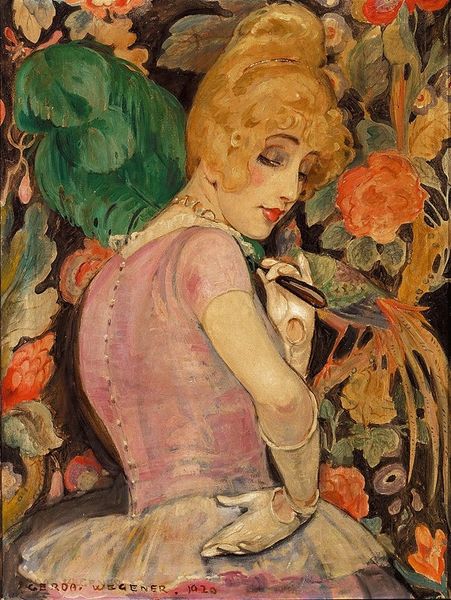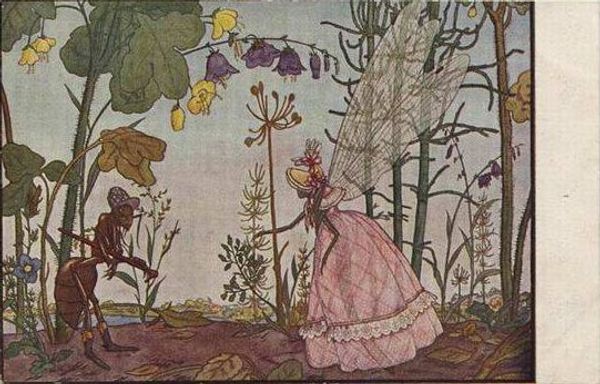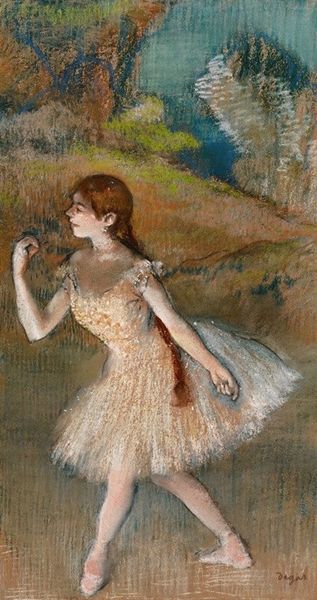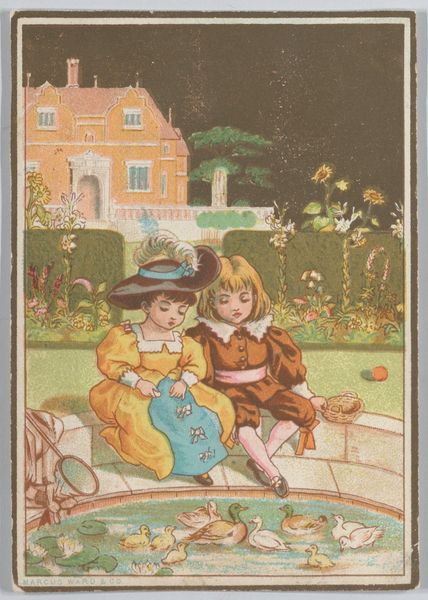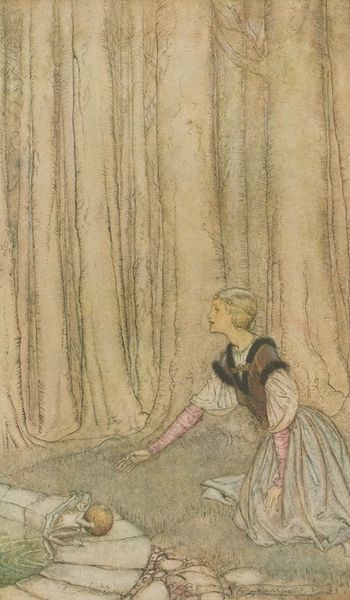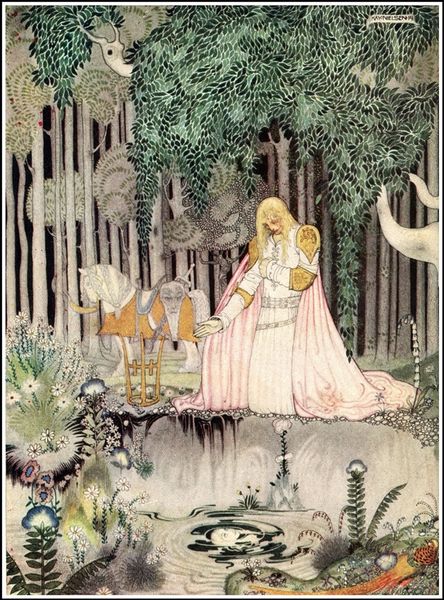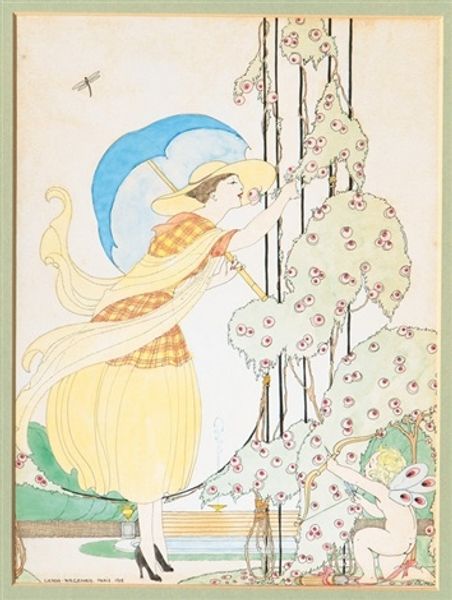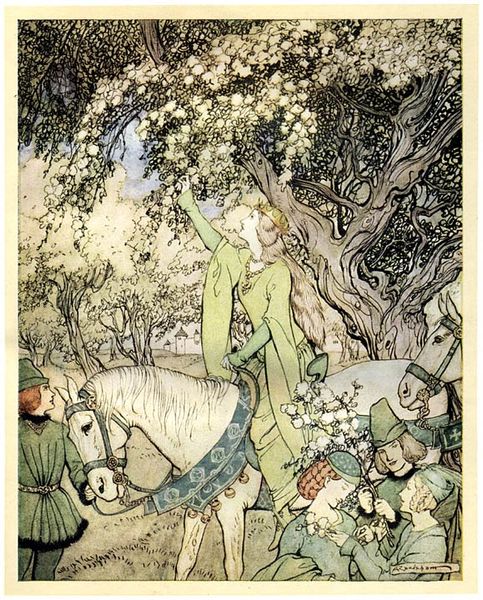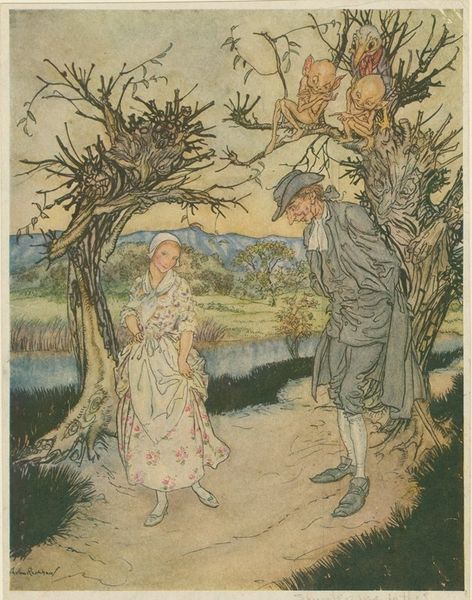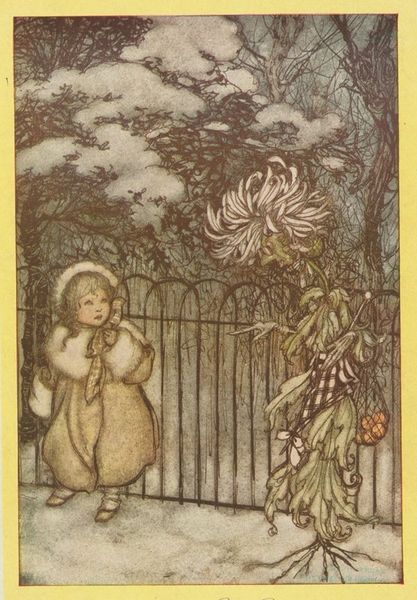
watercolor
#
fairy-painting
#
narrative-art
#
landscape
#
oil painting
#
watercolor
#
symbolism
#
watercolour illustration
#
genre-painting
#
pre-raphaelites
Copyright: Public Domain: Artvee
Editor: This is Jessie Willcox Smith's "Goldilocks and the Three Bears" created around 1916. It's watercolor illustration. Goldilocks is running away. The scene seems unsettling despite its charming style. I wonder, what do you see in this piece? Curator: Beyond a simple cautionary children’s tale, I see anxiety and a disruption of the domestic sphere, playing with deeply rooted archetypes of innocence and threat. Smith was very interested in portraying children, and childhood, in her images. Consider the fairytale itself: it reflects our subconscious fears regarding trespassing and the violation of privacy. Editor: So the bears represent not just bears, but a deeper violation? Curator: Exactly. The bear family mirrors a very Victorian sense of order and structure. They return to find their structured world is disordered. What does Goldilocks represent here? Editor: Maybe disruption? I mean, she’s blonde, pale and seemingly represents some level of privilege given what is ‘taken’. It almost seems symbolic of the era. Curator: Indeed! This is further underscored by the darkness of the forest from which Goldilocks flees, perhaps the unconscious? What sort of space is implied by her flight? Editor: I see that the fairytale shifts and moves between levels of cultural, and personal awareness that make this much more interesting. This fairytale illustration resonates well beyond the nursery. Curator: Exactly, it speaks volumes about the societal anxieties of the time.
Comments
No comments
Be the first to comment and join the conversation on the ultimate creative platform.
